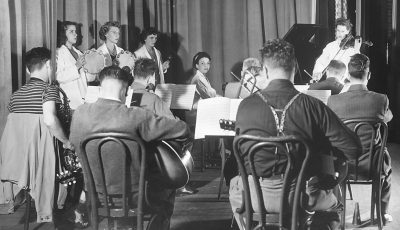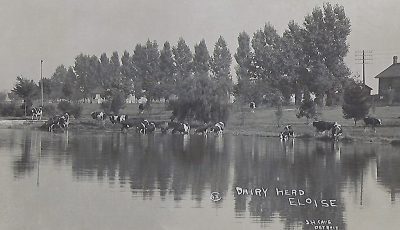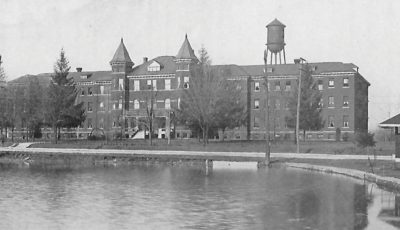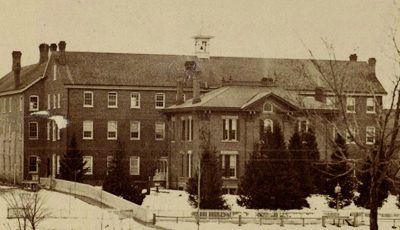Farming life in Wayne
 Back in the 1820s and 30s most of the area immediately outside the few downtown streets was originally settled as 40 – 80 acre farms. This land was mostly wooded with white and yellow oak with some poplar mixed in. The original landowners would have to cut the trees, pull or burn the stumps and do something with the wood.
Back in the 1820s and 30s most of the area immediately outside the few downtown streets was originally settled as 40 – 80 acre farms. This land was mostly wooded with white and yellow oak with some poplar mixed in. The original landowners would have to cut the trees, pull or burn the stumps and do something with the wood.
The first sawmill in Wayne was built in 1832 along the Rouge, just west of the present Wayne Road bridge, so that was one option. When the railroad came through Wayne in 1838 farmers could also sell the wood they had cleared to them for a decent price. After clearing the land, nearly everyone would plant an orchard of pear and apple trees, as these would take many years to mature.
Wheat, sheep and corn became the biggest cash crops for early settlers. Everyone would have a milk cow or two, and some hens for eggs. Women and children would usually manage a kitchen garden near the house growing other vegetables and fruits. Women would also often make butter and sell it or trade it for other food and commodities.
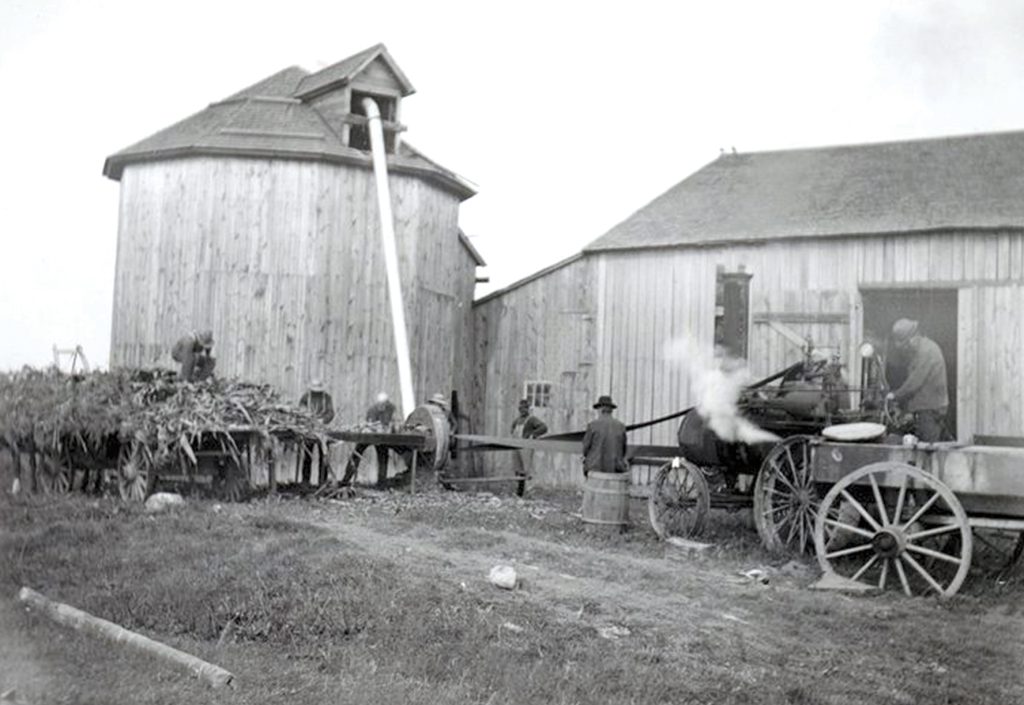
Harvest time at the first sawmill in Wayne. Photo courtesy of The Wayne Historical Museum
The barter system was strong here, as evidenced by an 1847 letter from the Hall family where they mentioned trading corn for apples, and one of the young daughters saving up money for cloth by selling butter and loaves of bread to the general store.
Disease was a constant worry, “Ague” (malaria), was rampant around here due to the poor drainage. The Halls had Ague nearly every year in the late 1840s, as well as an outbreak of meningitis and tuberculosis that had hit the town.
By the 1850s the average farm here in Wayne would have 2-4 horses, 2-4 milk cows, 2 oxen, 20-80 sheep, and 3-5 pigs. Potatoes became a popular crop, as well as a little rye and oats. Around 1/4 of farmers would also have a sugar bush, a place to tap maple trees to collect sap, boil it and get maple sugar. About 500 pounds of maple sugar was made here per year in the 1850s, and the practice continued into the 1900s.
After the Civil War farmers began to diversify into new specialty crops. Tobacco was grown here for the first time, and Wayne even had a few small cigar makers selling locally made product.
Eventually sugar beets also became a major staple to grow on the farms, as these would be processed into sugar. Peppermint oil also became a hot commodity in the 1890s, one farmer Mr. Newkirk was reported to have shipped 5,200 pounds of peppermint oil in one month.
Traditional farmers growing grains also had improvements as the first grist mill was built in Wayne in 1870, so farmers didn’t have to haul the crop to Ann Arbor or Detroit to grind and sell. This mill burned down in 1885 and was replaced with a bigger one in 1895. The new Lohr Mill could grind 75 barrels of corn per day and ran until 1938.
The population explosion caused by WW2 and the flight of people from Detroit after the war put immense pressure on the farms around Wayne and nearly all were sold off to become housing subdivisions. Your house is likely on land that was once a farm.
The only reminders are usually the names of some of the major roads, such as Venoy, Merriman, Hix, Hannan, Cogswell, and Howe, which are family names of the farms once on that road.
Plant a tree or a garden this summer in honor of the farmers who once called this place home.

Sheep and corn were the biggest cash crops for early settlers. Photo courtesy of The Wayne Historical Museum



